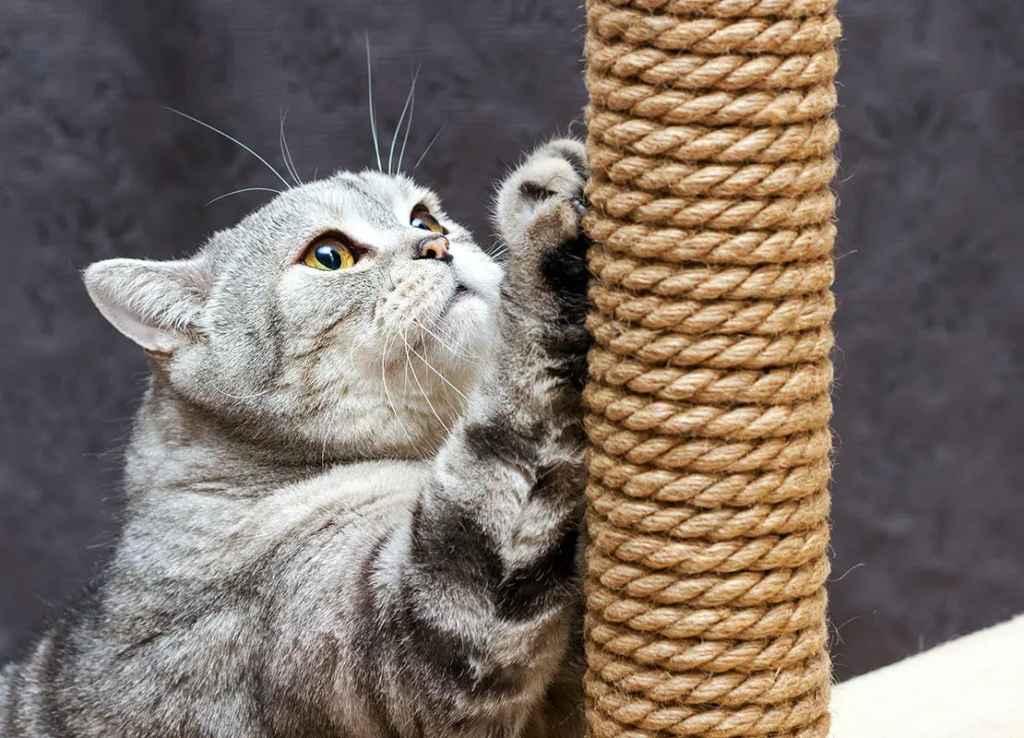Cats have an innate instinct to scratch. It’s a natural behavior that helps them sharpen their claws, mark their territory, and stretch their muscles. However, when this scratching is directed at your furniture, it can become a frustrating issue. Thankfully, there are effective training strategies to redirect this behavior and protect your beloved furnishings. Here’s a comprehensive guide on how to stop your cat from scratching the furniture.

1. Provide Appropriate Scratching Surfaces
The first step in addressing furniture scratching is to provide your cat with suitable alternatives. Invest in high-quality scratching posts or pads that are sturdy and tall enough to accommodate your cat’s natural stretching behavior. Scratching posts come in various materials, including sisal, cardboard, and carpet, so experiment to find what your cat prefers. Place these scratching surfaces in areas where your cat frequently scratches or near their favorite lounging spots to encourage usage.
2. Use Cat-Specific Deterrents
To discourage scratching on furniture, you can use deterrents that make the furniture less appealing. Consider applying double-sided tape or adhesive strips to the areas your cat scratches. Cats dislike the sticky texture, which can deter them from scratching the same spot. Additionally, you can use commercially available pet repellents that are designed to keep cats away from specific areas. Just ensure that these products are safe and non-toxic.
3. Reward Positive Behavior
Positive reinforcement is a powerful tool in training your cat. Whenever your cat uses the scratching post or pad, reward them with treats, praise, or playtime. This positive reinforcement helps your cat associate the scratching post with good things, making them more likely to use it consistently. Be patient and consistent with your rewards to reinforce this new behavior.
4. Trim Your Cat’s Claws Regularly
Regular claw trimming can reduce the damage caused by scratching. Keeping your cat’s claws short minimizes their ability to cause significant damage to furniture. If you’re unsure how to trim your cat’s claws, consult your veterinarian or a professional groomer for guidance. Regular claw trimming should be part of your overall cat care routine.
5. Cover Furniture with Protective Materials
If you need a temporary solution while training your cat, consider covering the furniture with protective materials. Furniture covers, slipcovers, or specially designed furniture protectors can shield your furniture from scratches. These covers can be removed once your cat has been successfully redirected to their scratching post.

6. Use Catnip and Toys
Enhance the appeal of scratching posts by using catnip or engaging toys. Sprinkling catnip on the scratching post or attaching a dangling toy can attract your cat and make the scratching post more enticing. The play and scent stimulation can encourage your cat to use the post rather than the furniture.
7. Address Stress and Anxiety
Sometimes, excessive scratching can be a sign of stress or anxiety. Ensure that your cat’s environment is enriched with toys, interactive playtime, and a consistent routine to reduce stress. Providing a calm and secure environment helps mitigate behavioral issues, including excessive scratching.
8. Use Furniture Protectors
Furniture protectors are another effective method to safeguard your belongings. These can include plastic shields or furniture-specific scratch guards that cover the areas your cat targets. These protectors are often clear, so they blend with your décor while serving as a barrier against scratching.
9. Re-evaluate Your Cat’s Environment
Assess your home environment for factors that may contribute to scratching behavior. Ensure that your cat has sufficient space to explore and play. Sometimes, a lack of stimulation or territorial conflicts can exacerbate scratching. Providing enrichment and a sense of security can alleviate these issues.
10. Consult a Professional
If you’ve tried various methods and your cat’s scratching persists, consider consulting a veterinarian or a feline behaviorist. They can provide personalized advice and identify any underlying behavioral or health issues contributing to the scratching.
Conclusion
Stopping your cat from scratching the furniture involves understanding their natural instincts and providing appropriate alternatives. By implementing these effective training tips, such as offering suitable scratching posts, using deterrents, and rewarding positive behavior, you can redirect your cat’s scratching habits and protect your furniture. With patience and consistency, you can create a harmonious living environment for both you and your feline friend.


